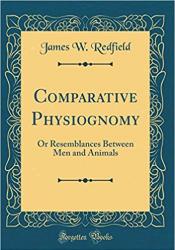"Comparative Physiognomy" Published
Physiognomy was a popular method of character study in the Victorian Era, in which one would "objectively" deduce a person's morality or personality based on their physical attributes alone. While physiognomy has a deep, intercultural history stretching back far before the 19th century, the practice wasn't widespread until the early 18th century, when European scholars began to develop theories surrounding its' merit as a credible scientific practice ("Physiognomy"). With this cultural emergence in popularity, English authors such as Charlotte Bronte began to employ physiognomy in their writing as a means to not only describe a character's appearance but to also provide the reader with context as to whether or not a character's appearance would fit within the contextual conventions of attractiveness in the depicted society. For example, in Villette, Mme. Beck employs M. Paul to scan Lucy Snowe's facial features as a quick judge of her character to determine whether or not she should be permitted entry into the pensionnat (Bronte). One year before Villette was published, Comparative Physiognomy by James Redfield was published in the United States in 1852-- showing how the scope of this phenomena extended beyond Europe, into the New World. In Comparative Physiognomy, Redfield compares human attributes and their level of trustworthiness to characteristics of wild animals, similar to Bronte's description of Graham's red hair in Villette as "lion's locks" (Chap. III). In modern times, physiognomy has become seen as a pseudoscience that was used previously as a means to justify prejudice against unconventional appearances.

Presently, I still find myself aghast from this most stunning revelation in regards to the "esteemed" Dr. John. How could a figure depicted so benevolently be revealed a miscreant so foul as Graham Bretton? Surely, a man so practiced in physiognomy such as M. Paul could not look into the eyes of a demon and allow him passage into the pensionnat of his own beloved cousin! I fear the savage's favorably fair skin, Celtic lineaments, and otherwise facetious disposition have blinded M. Paul of any sensibility. Moreover, I pray this revelation of Dr. John's true identity to not be prophetic of impending calamity. Still, I ponder how his transgressions can go seemingly unnoticed. Is his countenance of sin not clear as day? Do his auburn locks not conjure up an imminent betrayal akin to that of Judas? Alas, it would not be the first time one of his kind has hidden their perfidious nature. Ere long, the light of day will shine upon his mane of "chestnut" and reveal those hidden shades of hellfire. I pray this happens before he corrupts any more souls of the people of Rue Fossette. The global physiognomic studies of man, as provided by God and science, prove him guilty. My conjecture predicts this beastly lion has masked his indignant machinations through the subtle malpractice of his profession. Oh, how sardonic his fate has proven! No doctor could craft a draught to cure such a malady, no repentance could heal the afflictions of inherited sin.
Works Cited
Bronte, Charlotte. "Villette." COVE Studio, 2020, https://studio.covecollective.org/documents/villette-2. Accessed 12 Sept 2020.
"Physiognomy" Wikipedia, Wikimedia Foundation, 14 Aug 2020, https://en.wikipedia.org/wiki/Physiognomy. Accessed 12 Sept 2020.
Redfield, James. "Comparative Physiognomy: or, Resemblances Between Men and Animals (1852)." The Public Domain Review, https://publicdomainreview.org/collection/comparative-physiognomy-or-res.... Accessed 12 Sept 2020.

